Top Photo: View of Stutthof concentration camp shortly after the camp’s liberation in May 1945. Credit: The United States Holocaust Memorial Museum, courtesy of Panstwowe Muzeum Stutthof.
As the Red Army swept relentlessly westward during the harsh winter of 1944–45, the Nazi regime evacuated thousands of inmates. A vast array of captives—prisoners of war, political and religious opponents, forced laborers, Jews and Roma targeted for extermination as racial enemies, and gay men incarcerated because of their sexuality—were compelled to march. These columns zigzagged across Central Europe, trying to stay ahead of the Soviets (similar evacuations happened later as the Western Allies advanced into Germany) under the guns of the SS and the German armed forces. The stories emerging from these chaotic flights, which continued into May 1945, are absolutely harrowing.
Stutthof concentration camp was among the sites of horror caught up in this gruesome crescendo to Adolf Hitler’s war for racial supremacy. Its history is bound up with Nazi Germany’s expansion into Eastern Europe and the detestable dreams of Lebensraum (“living space”) for ethnic Germans at the expense of Slavs, Jews, and Roma. Since the camp was one of those liberated by the Red Army, it still tends to be unknown to most of the Anglophone world. This article is an attempt to integrate Stutthof into mass, popular awareness of the Holocaust.[i]
Origins, Transformation, and Expansion of the Camp
The Stutthof camp came about with the attack on Poland in September 1939. Originally, the Germans set it up immediately after the invasion as an internment camp about 20 miles east of Danzig (present-day Gdansk, Poland, where the German navy initiated hostilities on September 1, 1939), formerly a “free city.” Erected in a wooded area, its purpose was to hold primarily non-Jewish Poles deemed politically suspect. As such, Stutthof formed part of the Nazi campaign targeting Polish elites (politicians, nobles, clergy, professors, journalists) described thoroughly by Alexander Rossino and other scholars.[ii] Jurisdiction of it fell under the control of the German police chief in Danzig in reconstituted West Prussia.
Stutthof stood apart from most Nazi incarceration and annihilation sites due to its proximity to so many bodies of water. To its west flowed the Vistula River, east was Vistula Bay, and north lay the Bay of Danzig and the Baltic Sea. During World War II, inmates were brought to and evacuated from Stutthof by sea. It did resemble concentration camps like Dachau and Sachsenhausen in the nearness to a major urban center (Danzig had more than 400,000 inhabitants, overwhelmingly German, when the war began).
The Nazis wasted little time introducing terror into the operation of Stutthof. In a grisly episode from World War II’s first months, the SS compelled Polish political prisoners to participate in the murder of mental patients. Henry Friedlander documented how in October and November 1939, these inmates were forced to dig mass graves in a forest near the West Prussian town of Neustadt for some 3,500 patients, all German nationals, transported from mental hospitals in Pomerania, in northern Germany, and from Danzig itself.[iii] SS men under the command of Kurt Eimann executed the victims—women and men—with a shot to the back of the neck and then ordered the Stutthof inmates to fill in the graves. Once the slaughter of the mentally ill concluded, Eimann’s unit shot the concentration camp prisoners to ensure no witnesses lived. This early instance of mass atrocity took place outside of the parameters of the infamous T-4 program for the clandestine mass murder of individuals with mental and physical disabilities.
For more than two years, Stutthof functioned as a site of internment. In November 1941, the Security Police, headed by the notorious Reinhard Heydrich, took it over and designated it a place for “labor education,” a euphemism for forced labor. This new phase lasted merely a few months, however, until Stutthof was officially categorized as a “concentration camp” in January 1942 following a visit to the site by SS leader Heinrich Himmler. It was only in 1944 that it became a major place in the Nazi camp system.
The SS rapidly incorporated the inmates into the Third Reich’s war effort. As forced laborers, Stutthof prisoners made bricks, did agricultural work, and toiled in the camp’s own workshops or SS-owned enterprises. When the Nazi regime’s military fortunes waned, they were pressed into producing Focke-Wulf aircraft for the Luftwaffe or repairing damaged rail lines. Eventually, with the advance of the Red Army, SS leadership compelled inmates to construct fortifications.
Just like other concentration camps, Stutthof metastasized. In 1943–44, the Nazis enlarged the main camp itself and augmented the SS team stationed there with Ukrainian auxiliaries. A special camp for women was eventually added and the SS recruited dozens of German women to serve as guards. Security measures tightened, too, in Stutthof in the second half of World War II. Fences of barbed-wire gave way to electrified barbed-wire fences.
During the same period, Stutthof emerged as the center of a network of more than 100 subcamps that stretched into the city of Danzig proper. Elbing, to the southeast, and Thorn, to the southwest, are usually named as the two principal subcamps. With the camp’s staggering expansion, one could speak in 1943–44 of a crooked line of Nazi carcerality, interlocking with ghettos and labor camps, extending from Neuengamme near Hamburg through Stutthof to the camp at Kovno in Lithuania (built on the site of the ghetto there) to Kaiserwald, close to Riga, Latvia, and up to the concentration camp at Vaivara in northeast Estonia.
The composition of the camp’s population also substantially changed as the war progressed. According to Hermann Langbein, the Austrian leftist, survivor of Auschwitz, and historian of the Nazi camps, Soviet prisoners of war arrived in Stutthof in 1943. A group of them formed an underground organization. Despite their secrecy and strict discipline, only a small number of them survived the war.[iv]
Political prisoners, primarily communists, from Denmark were incarcerated in Stutthof in late 1943. They had been apprehended by Danish authorities or by the Gestapo. As resistance against the Germans in Denmark markedly increased, the Nazis delivered these men to Stutthof, among them Martin Nielsen, a communist and member of Parliament.[v]
Nikolaus Wachsmann points out that there were only about 7,500 inmates still in Stutthof in the spring of 1944, a relatively small number in comparison with other concentration camps. When Soviet forces surged westward in the summer of that year, fearful Nazi authorities removed Jews from ghettos in Poland, Lithuania, and Latvia to Stutthof. This first wave of the Death Marches, which transpired before the advent of winter, is much less familiar to American audiences. By the end of the summer of 1944, Wachsmann documents, Stutthof’s population expanded to more than 60,000—at least 20,000 of them Jewish women from Auschwitz-Birkenau—becoming the “main destination” for evacuated prisoners in this region.[vi]
The massive influx of new prisoners had immediate consequences. Already deplorable conditions worsened dramatically and exacted a heavy toll on Stutthof’s population. Epidemics of typhus ravaged the camp in 1942 and then again in late 1944.
The “Bottom of the Barrel for Humanity”
In July 1944, Solly Ganor was one of those Jews removed from the Kovno Ghetto in Lithuania and transported to Stutthof. Ganor hailed from the border area between Lithuania and German East Prussia (his father was a Marxist, a member of the Mensheviks, who, Solly claimed, was condemned to death by the Bolsheviks but escaped execution) and was 16 when he came to Stutthof. Conditions in the ghetto had been dreadful, with “selections” periodically taking place. Now arriving in Stutthof, Ganor recalled how he found it to be “some abyss,” the “bottom of the barrel for humanity.”[vii]
Hannah Rath, a German Jew from the city of Halberstadt, also numbered among the new arrivals in Stutthof. She was transferred there from Kaiserwald concentration camp by boat in September 1944. Realizing that Yom Kippur, the Day of Atonement in Judaism, was upon them, she and other inmates managed, miraculously, to celebrate the holiday secretly on the voyage.[viii] This preservation of Jewish tradition (Rath came from a pious Orthodox family) was one of many acts of resistance that must not be overlooked in the history of Stutthof concentration camp.
Ganor and Rath underwent the usual indignities of incarceration in a concentration camp. Their heads were shaved, their valuables were seized, and they had to wear the striped uniforms. They and fellow inmates coped with the excruciatingly lengthy periods of roll call the SS enacted each day. Lice infested their clothes. Far, far worse lay ahead for them, however.
Never ceasing to nauseate, the SS at Stutthof employed several methods to kill prisoners throughout World War II. Physicians staffing the camp’s infirmary administered injections of phenol or gasoline into the hearts of individuals. Starvation or deliberate, sustained exposure to the cold eliminated others. Leo Kutner, the son of a Jewish tailor from Danzig sent to Stutthof in 1940 (he was transferred to Auschwitz-Birkenau in 1942), never forgot the sadism of SS guards supervising Jewish inmates compelled to work.[ix] They enjoyed grabbing and hurling the head coverings of these prisoners protecting them from freezing temperatures and ordering them to run and pick them up. As soon as they ran, the SS shot them.
The brutality witnessed by Kutner only magnified in the war’s last two years. The SS installed a gas chamber in the camp, and gassings with Zyklon B, the pesticide first utilized at Auschwitz-Birkenau, commenced in June 1944. Manfred Goldberg, a German Jew deported to Stutthof from Latvia in August 1943 (he was held later in several of Stutthof’s subcamps), stated to the BBC in 2022 that inmates nicknamed the entrance to the camp the “death gate.”[x] It was a most fitting appellation. By this point, Stutthof operated as a fully integrated cog in the Nazi genocidal system. Here we see in the history of the Third Reich’s war an inverse relationship between military fortunes and mass killing: as the regime’s prospects for victory dimmed beyond any recuperation, it stepped up the slaughter of all “enemies” of the regime.
As more and more inmates streamed into the camp from other locales, the SS escalated the violence always endemic to their organization. To reduce overcrowding, they demonstrated how “innovative” they could be in the taking of human life. Wachsmann describes in mortifying detail how SS man Arno Chemnitz imported a method from Buchenwald (utilized against Soviet prisoners of war) for shooting women and men in the back of the neck in Stutthof’s crematorium.[xi] Such grisly methods appealed more and more as murder operations in Auschwitz-Birkenau halted in the fall of 1944 and prisoners could no longer be moved there to be gassed.
Soon thereafter, winter set in—one of the most severe on record. Along with dropping temperatures came a new epidemic of typhus in Stutthof. Typhoid fever afflicted Hannah Rath. In an interview with The National WWII Museum’s Hannah Dailey, Stutthof survivor Judith Meisel related how she and her sister, Rachel, were also stricken with it.[xii] Born in 1929 and from a Jewish family from Josvainiai, Lithuania, she had, like Solly Ganor, endured the Kovno Ghetto before the Nazis deported her, Rachel, and their mother, Mina, to Stutthof in 1944. Burned into Meisel’s memory were how two gold teeth were pulled from her mother’s mouth right after they left the train and how, because a Nazi officer wanted some of her hair for his daughter’s doll, her hair was torn out at the roots. Her mother perished in the gas chambers, but she and Rachel would survive the plague of typhus. So many inmates did not, however: The death toll eventually reached some 250 per day in January 1945 and, on January 8, Richard Glücks, the SS official overseeing the camp system, quarantined Stutthof for nearly two weeks.[xiii] By the time Glücks lifted the quarantine, the Red Army was practically at the gates.
On January 12, 1945, the Soviets launched the Vistula-Oder Offensive to drive through Poland into Germany proper.[xiv] To the north, Marshal Konstantin Rokossovsky’s 2nd Belorussian Front and General I.D. Cherniakhovsky’s 3rd Belorussian Front slammed into East Prussia the next day. The Red Army’s push, facing a completely overwhelmed German Army Group Center (soon to be renamed Army Group North), destabilized the entire area. East and West Prussia were exceedingly vulnerable to the Soviet onslaught.
Trails of Sorrow
It is within this context that we encounter the Death Marches or, better, the Death Marches of the winter and spring of 1945 (as I noted above, there had been Death Marches significantly earlier in 1944).[xv] On a personal note, my understanding of them was deepened immeasurably when I heard Maurice Cling, a survivor of Auschwitz-Birkenau, recount his experiences in Pontlevoy, France, in April 2011. He told a crowd of students and professors from the United States how he, astonishingly, never saw a single corpse in Auschwitz. One of the 56,000 inmates in the Death March out of that hell, Cling recalled how desperately people tried to stay at the front of the column, realizing all too well the consequences of falling behind, and how the SS guards killed anyone who could not keep pace. Sounds of gunshots and screams propelled him forward and taught him the meaning of terror.
Cling’s story mirrors that of so many others, including inmates from Stutthof. Masses of human beings died in random locations during the Death Marches. They expired on roadsides and on beaches, in forests, fields, meadows, and the mountains, in train cars and on ships, and in the concentration camps that were their final destinations. Often it was the cold that ended them; in other cases, German bullets. Tragically, inmates did fall victim to Allied air raids. For many, it was typhus or the insidious effects of malnutrition. When reading about these events, the words of Paul Celan, a Romanian-born Jew who survived a Nazi forced labor camp (both his parents perished during the Holocaust), ring in the ears: “Death is a master from Germany.”[xvi] The Death Marches left trails of sorrow across Central and Eastern Europe.
Our knowledge of these Death Marches has advanced considerably in the decades since the war’s ends as investigators have better traced the movements of the prisoners. In many instances, the very term “death march” misleads. Camp inmates were not only marched, they were also crammed into rail cars for parts of their journeys. For the men, women, and children in Stutthof, boats and ships played a key role in their relocation.
In 1987, historian Michael Marrus, citing earlier work by Yehuda Bauer, estimated that more than 100,000 Jews perished in the Death Marches.[xvii] Subsequent research has called for a major revision of this claim. Daniel Blatman, whose monograph has become the most significant work on the topic, puts the number at 250,000.[xviii] Even if we grant that new findings will necessitate revising these figures again, we can still be appalled at this immense loss of life in World War II’s twilight moments.
Massacre followed massacre with a sickening repetition in the final months of the Nazi camp universe. With food running low, the SS announced the evacuation of Stutthof on January 25, 1945, two days before the liberation of Auschwitz-Birkenau. In the first wave of killing in January 1945, the SS executed some 5,000 inmates, driving them into the icy waters of the Baltic and gunning them down. Others were taken from the camp and compelled to march to Lauenburg (today Lębork), about 70 to 80 miles west. Cut off by advancing Soviet forces, the SS returned them to the site of the camp. Severe cold or SS cruelty took the lives of thousands in this back-and-forth.
Against these demoralizing odds, some did escape—and lived as witnesses to these nightmares. Both Rath and Meisel managed, separately, to break away from the columns. Stricken with typhoid fever, Rath was dragged on a sled by a dear friend. Hearing gunfire from oncoming Soviet soldiers, the SS, cowards that they truly were, fled. Subsequently, Rath and her friend found refuge—food, warmth, a bed, and medical care—in a house owned by Poles. Eventually, they encountered Soviet troops, who, Rath conveyed, “mistreated” them and did not comprehend that they were survivors. Sympathy for their situation among Poles became increasingly scarce as the war wound down.
For Meisel, a Soviet air strike made it possible for her to get free from her Nazi captors. With bombs falling, she and Rachel took cover in a ditch. Afterward, a woman—Meisel could not be certain whether she was Polish or German—provided clothing. Soviet troops told her and her sister to cross a narrow section of the Vistula River on all-fours (so as not to shatter the ice), which they did. They found sanctuary, temporarily, in a convent. After surviving, miraculously, the torpedoing of a ship bearing them away from German shores, the sisters arrived in Denmark and were liberated in May 1945.
Ferocious fighting raged in the area while the Nazis deliberated about what to do with the remainder of the camp’s population. To the west of Stutthof, Danzig fell to the Soviets on March 30, 1945. To the east, Königsberg, the old capital of East Prussia, held out until April 9, when German defenders surrendered this “fortress city” to Marshal Aleksandr Vasilevsky.
Soviet forces then closed in around the concentration camp, and SS personnel ordered another evacuation in late April. Of this frightful episode, Manfred Goldberg reported: “Our group was marched out of Stutthof on 26 April. Anyone marching who didn’t have the strength was shot.”[xix] This evacuation was conducted mainly by sea. Once again, the absolute savagery of Nazism exhibited itself. Guards murdered hundreds by or in the water. Some 4,000 inmates did make it to ships, destined for German ports to the west or to Neuengamme concentration camp. Many perished en route, while an especially fortunate group were transferred into Swedish custody just before the German surrender.
Solly Ganor had to withstand an arduous odyssey before he was freed from SS enslavement. Deported from Stutthof to Utting, a subcamp of Dachau near Landsberg in Bavaria, with a factory devoted to the production of the Messerschmitt 262 jet fighters, Ganor and his father were herded into a gigantic column of some 10,000 mostly Jewish marchers. This “grotesque attempt to do away with us,” as Ganor dubbed it, was a death sentence for many already weakened by the lack of food. They died amid the overwhelming natural beauty of southeast Bavaria. According to Ganor, it was Clarence Matsumura, a Japanese American soldier of the 522nd Field Artillery Battalion of the celebrated 422nd Regimental Combat Team, who found and saved him on May 2, 1945, near the village of Waakirchen, close to the Austrian border.
“All deaths in the Holocaust were unnecessary, of course, but the fate of those killed on the death marches or who died just before or—as occurred in many cases—after the Allied troops arrived on the scene is intolerable, and the mind rebels against it.”[xx] These words from historian Dan Stone capture a truth of such lasting bitterness: that droves of human beings who had endured so much torment and the constant threat of death succumbed to the elements or disease or SS violence with their freedom so agonizingly close at hand.
Soviet troops finally set foot in Stutthof on May 9, 1945, as World War II in Europe officially ended. They liberated roughly 100 people who had evaded SS evacuation measures. Soon after liberation, Soviet authorities photographed the ovens and learned about Nazi efforts to demolish the camp’s gas chamber.
Following the war, Rath and Meisel immigrated to the United States and constructed new lives for themselves, with family and community central. Rath, in fact, married a fellow survivor she met on the transatlantic voyage to the States. Both Rath and Meisel also labored mightily to ensure that neither Stutthof nor the Holocaust were lost to historical oblivion. While Goldberg settled in the United Kingdom, Ganor followed the path of many Jewish survivors and went to Israel in the late 1940s.
Although it was a concentration camp for far less time than the much more familiar Dachau and Buchenwald, Stutthof proved to be an even deadlier place than either. Ruth Schwertfeger’s book, A Nazi Camp Near Danzig (2023), has added to our knowledge of just how deadly Stutthof was.[xxi] Schwertfeger contends that 120,000 people were incarcerated there during World War II. Out of that number, more than half—65,000—did not survive.
Lasting for virtually the entirety of World War II, Stutthof is now a memorial site and place of remembrance and reflection. May it find a place within the global memory of the Holocaust, a memory project already so overburdened with the systematic degradation and death of millions.
Sources and Footnotes:
[i] This article draws a great deal, factually, from the excellent article on Stutthof in the United States Holocaust Memorial Museum’s online Holocaust Encyclopedia, available at https://encyclopedia.ushmm.org/content/en/article/stutthof.
[ii] Alexander Rossino, Hitler Strikes Poland: Blitzkrieg, Ideology, and Atrocity (Lawrence: University Press of Kansas, 2003).
[iii] Henry Friedlander, The Origins of Nazi Genocide: From Euthanasia to the Final Solution (Chapel Hill: University of North Carolina Press, 1995), 136-137. Eimann’s unit would also murder Polish mental patients, killings which took place outside of the framework of the T-4 program for the murder of individuals with physical and mental disabilities sanctioned by Adolf Hitler in early October 1939.
[iv] Hermann Langbein, Against All Hope: Resistance in the Nazi Concentration Camps 1938-1945, trans. Harry Zohn (New York: Paragon House, 1994), 163.
[v] Martin Nielsen produced a book from his experiences at Stutthof that has never been translated from the Danish—Rapport fra Stutthof (Report from Stutthof), 3rd ed. (Copenhagen: Tiden, 1952).
[vi] Nikolaus Wachsmann, KL: A History of the Nazi Concentration Camps (New York: Farrar, Straus, and Giroux, 2015), 551.
[vii] See the 1997 interview (done originally for the documentary film, The Kovno Ghetto: A Buried History) with Solly Ganor https://collections.ushmm.org/search/catalog/irn44273, the United States Holocaust Memorial Museum; acquired from Herb Krosney. The discussion of Stutthof begins at 24:45.
[viii] See Part 1 of the filmed talk from April 2005 where Hannah Rath detailed her experiences, https://collections.ushmm.org/search/catalog/irn78767, United States Holocaust Memorial Museum Collection, Gift of Congregation Shaarey Tikvah, Beachwood, Ohio www.shaareytikvah.org. Rath’s description of the voyage and Stutthof concentration camp begins at 13:15.
[ix] See Part 1 of the oral history with Leo Kutner conducted in March 1991 by the Jewish Federation of Richmond (Virginia) and available through the United States Holocaust Memorial Museum: https://collections.ushmm.org/search/catalog/irn512479. Kutner’s description of Stutthof starts at 28:00.
[x] Quoted in Paul Kirby, “Stutthof Survivor: Entrance into Nazi Camp Meant a Death Sentence,” BBC News, December 20, 2022 (available at https://www.bbc.com/news/world-europe-64042502).
[xi] Wachsmann, KL, 552.
[xii] See the oral history Hannah Dailey did in June 2018 with Judith Meisel, https://www.ww2online.org/view/judith-meisel#auschwitz-then-stutthof-arrivals. The material dealing with Meisel’s experiences in Stutthof begins at 27:05.
[xiii] Wachsmann, KL, 552.
[xiv] For a good discussion of the Vistula-Oder Offensive, see Robert Citino, The Wehrmacht’s Last Stand: The German Campaigns of 1944-1945 (Lawrence: University Press of Kansas, 2017), 421-435.
[xv] For a powerful description, see Daniel Blatman, The Death Marches: The Final Phase of Nazi Genocide, trans. Chaya Galai (Cambridge, Mass.: The Belknap Press of Harvard University Press, 2011), Ch. 3.
[xvi] I quote here a key line from Paul Celan’s wrenching poem, “Death Fugue,” published in 1948 and widely available in English translation.
[xvii] Michael Marrus, The Holocaust in History (New York: Meridian, 1987), 56.
[xviii] Blatman, The Death Marches, 2.
[xix] Quoted in Kirby, “Stutthof Survivor.”
[xx] Dan Stone, The Holocaust: An Unfinished History (New York: Mariner Books, 2023), 235.
[xxi] Ruth Schwertfeger, A Nazi Camp Near Danzig: Perspectives on Shame and the Holocaust from Stutthof (London: Bloomsbury, 2023).
Jason Dawsey, PhD
Jason Dawsey, PhD, is ASU WWII Studies Consultant in the Jenny Craig Institute for the Study of War and Democracy.
Cite this article:
MLA Citation:
APA Citation:
Chicago Style Citation:
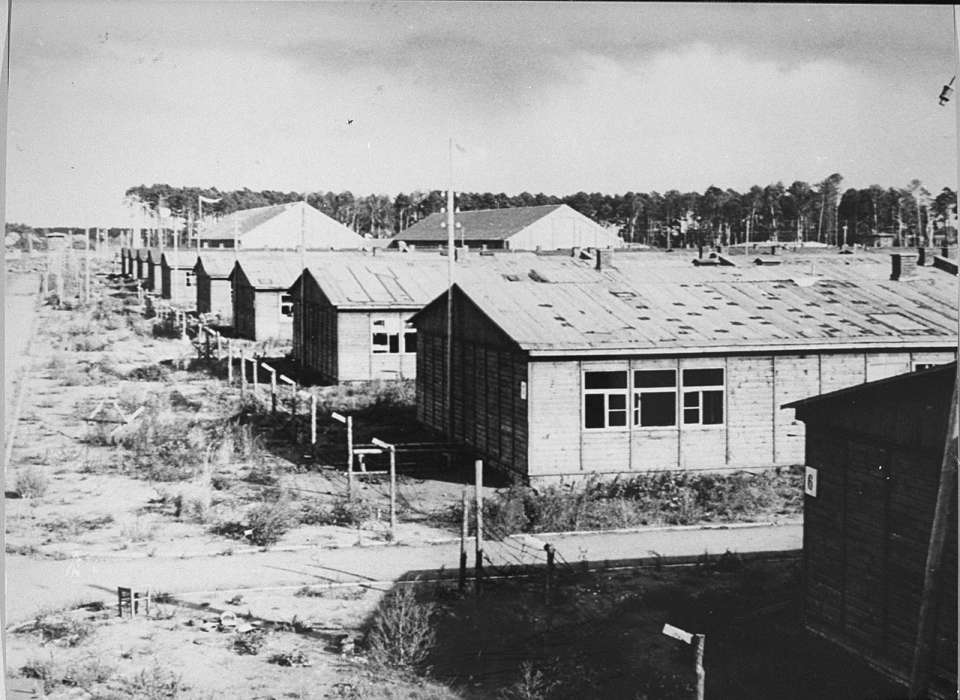
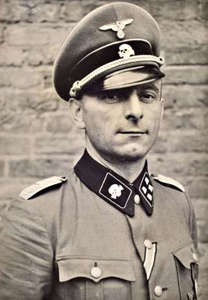
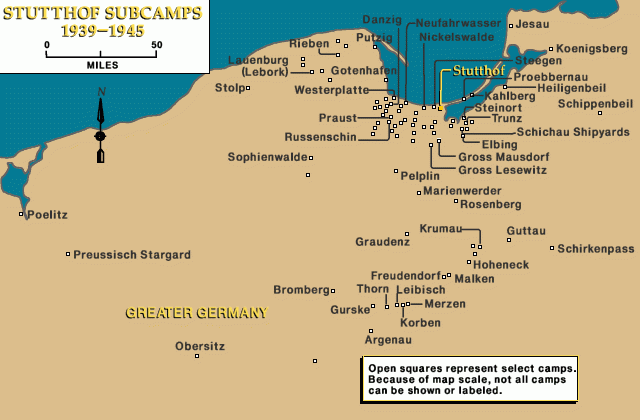
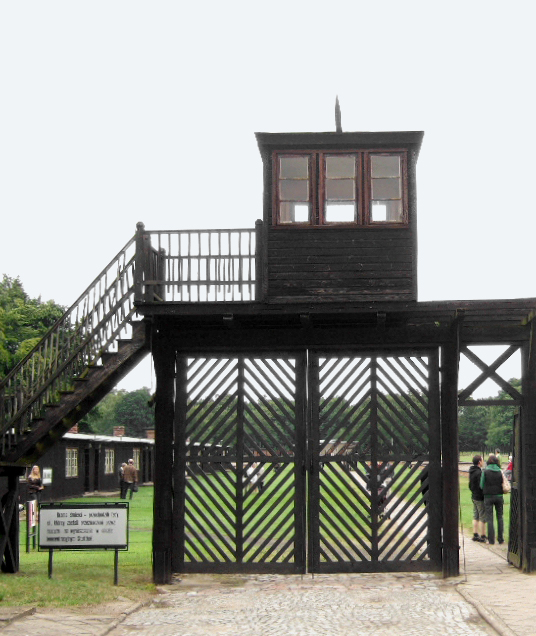
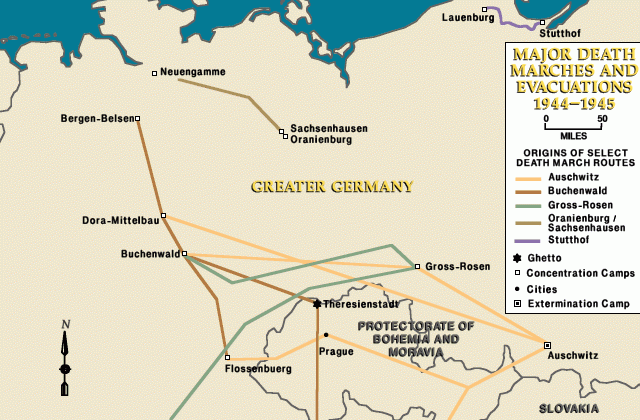
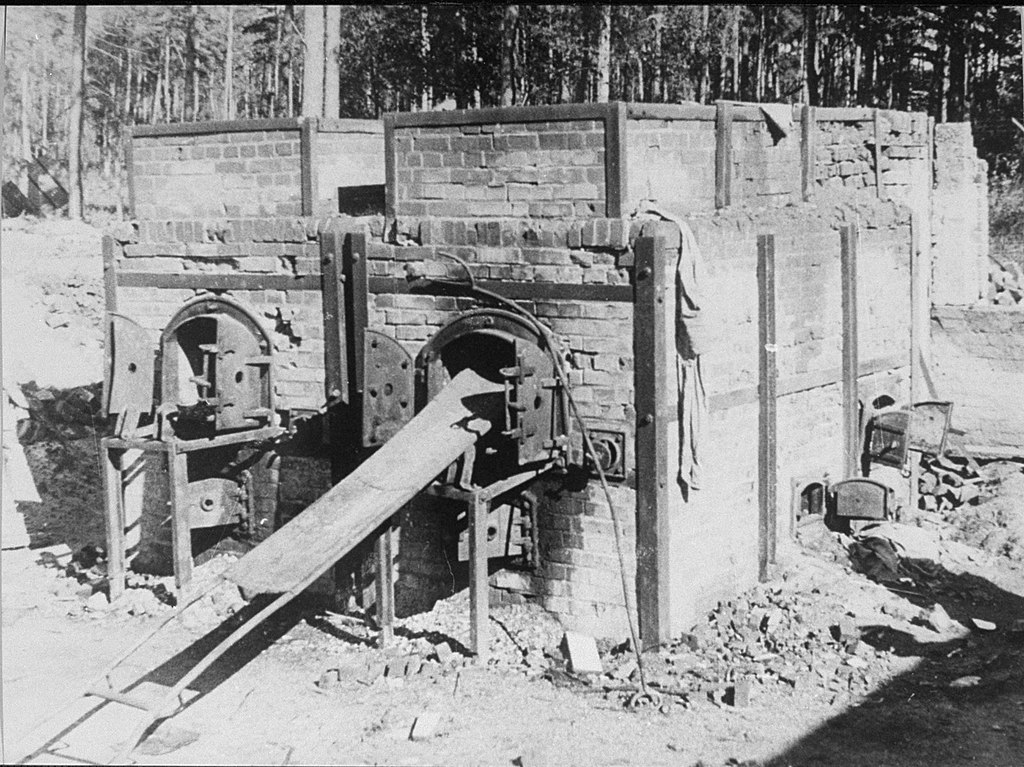

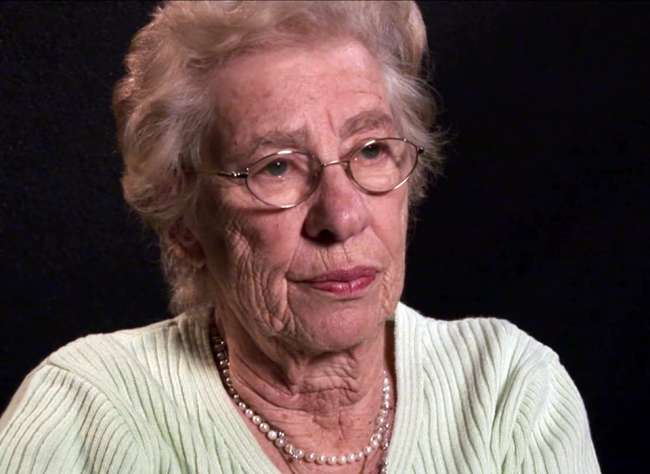



![Max Fuchs, New York City cantor, sings as Rabbi Sydney [sic] Lefkowitz, Richmond, VA, conducts the first Jewish services from Germany.](/sites/default/files/styles/max_650x650/public/2025-10/image1.jpg)


